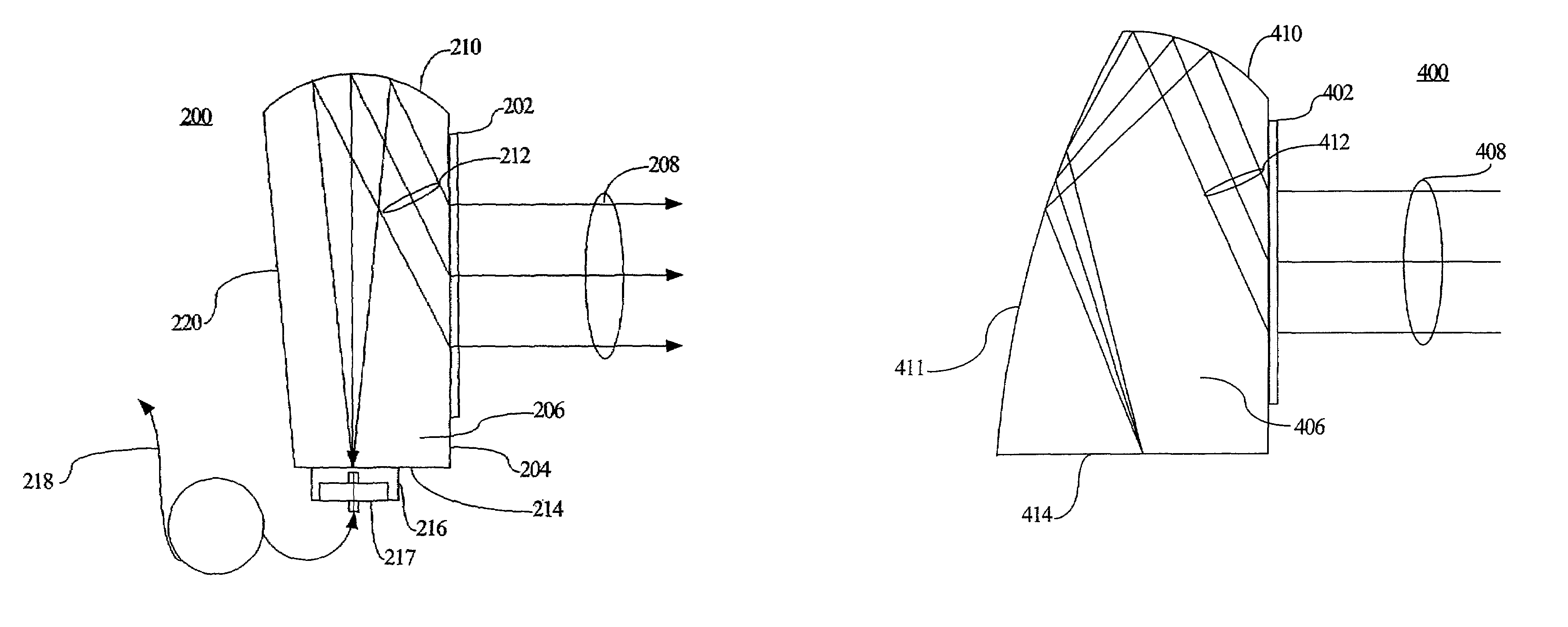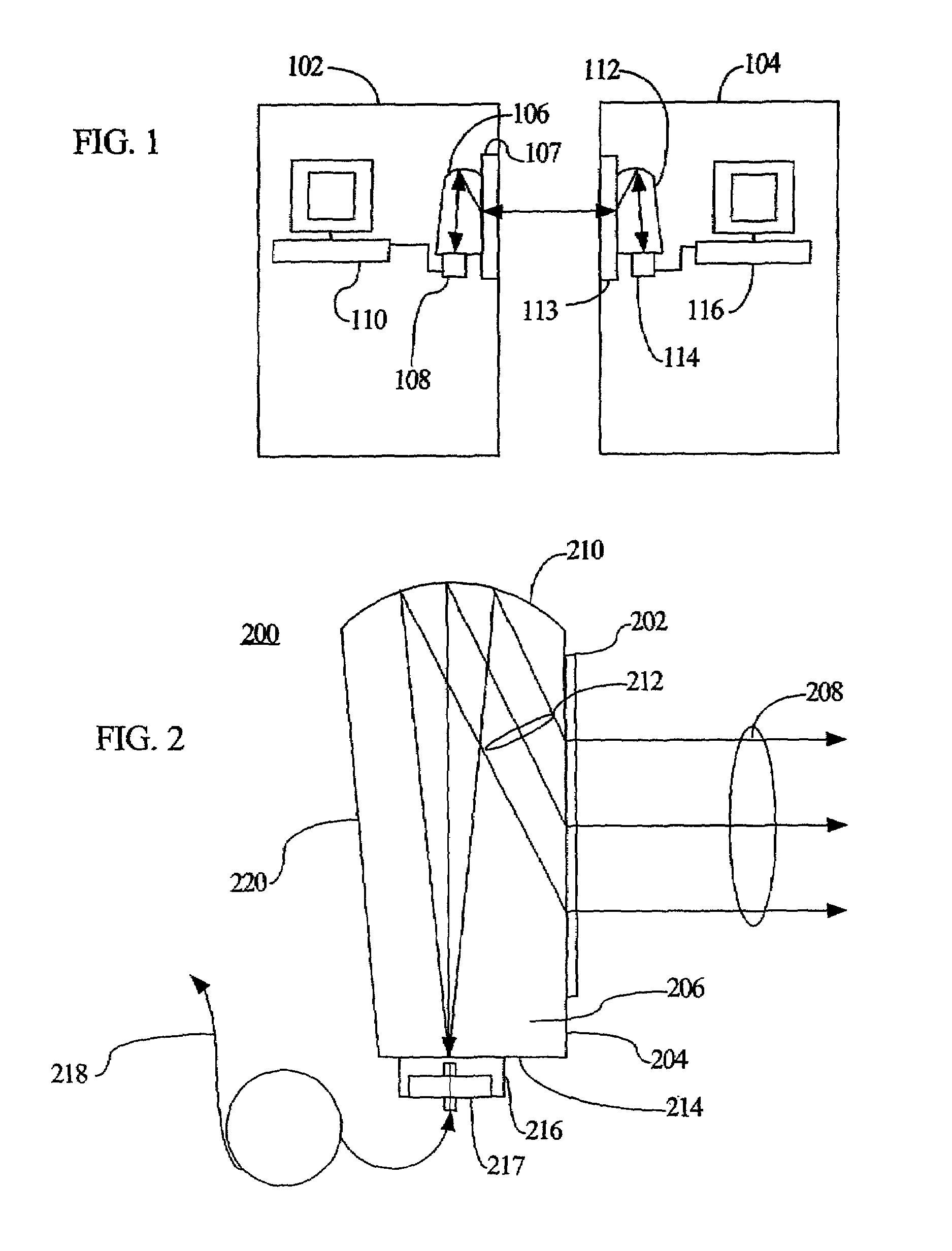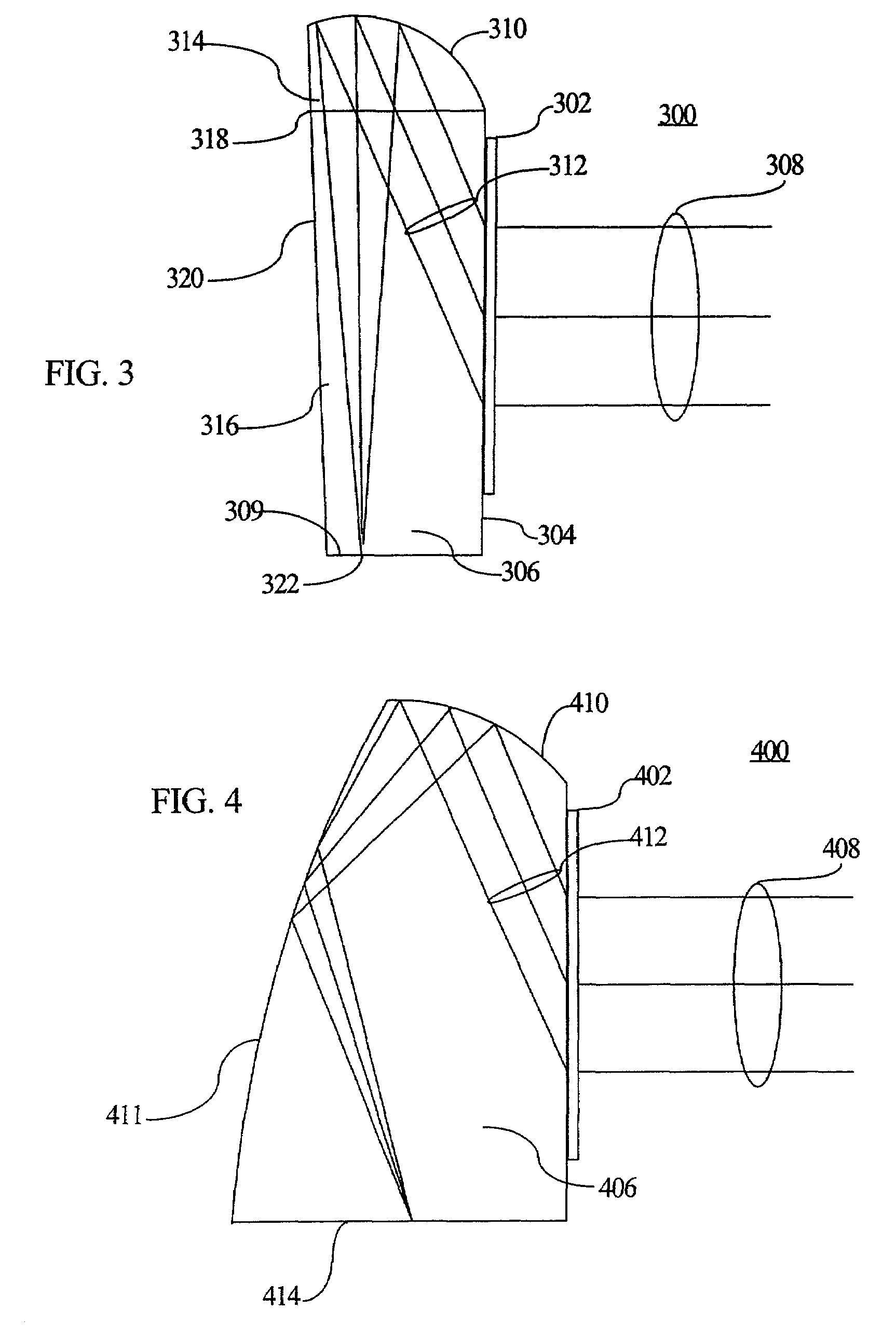Hybrid optical transceivers for free space optical communication
a technology of optical communication and optical transceivers, applied in the direction of line-of-sight transmission, instruments, optical elements, etc., can solve the problems of inability to economically configure to reach, disruptive and laborious installation of such systems in existing buildings, and several practical limitations, etc., to achieve the effect of being ready to adap
- Summary
- Abstract
- Description
- Claims
- Application Information
AI Technical Summary
Benefits of technology
Problems solved by technology
Method used
Image
Examples
Embodiment Construction
[0030]With reference to FIG. 1, a communication system is configured to transmit data, voice, or other information between buildings 102, 104. An optical transceiver 106 is situated at or near a window 107 and is configured to transmit optical signals produced by an optical transmitter / receiver module 108 to the building 104. The optical transceiver 106 is also configured to receive optical signals from the building 104 and direct the received optical signals to the optical transmitter / receiver module 108. The received optical signals are converted to electrical signals at the transmitter / receiver module 108 or can be deliver by an optical fiber or other optical apparatus to a server 110 that includes electrical-to-optical and / or optical-to-electrical conversion circuitry. The associated electrical signal is then processed by the server 110 or other computer or network element.
[0031]An optical transceiver 112 is similarly configured at the building 104 for communication with the bui...
PUM
 Login to View More
Login to View More Abstract
Description
Claims
Application Information
 Login to View More
Login to View More - R&D
- Intellectual Property
- Life Sciences
- Materials
- Tech Scout
- Unparalleled Data Quality
- Higher Quality Content
- 60% Fewer Hallucinations
Browse by: Latest US Patents, China's latest patents, Technical Efficacy Thesaurus, Application Domain, Technology Topic, Popular Technical Reports.
© 2025 PatSnap. All rights reserved.Legal|Privacy policy|Modern Slavery Act Transparency Statement|Sitemap|About US| Contact US: help@patsnap.com



